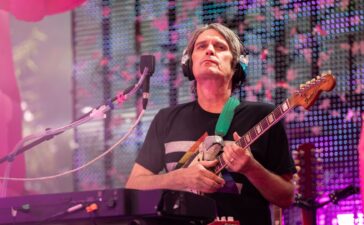If heavy music has always been about testing limits, noise music takes that idea and cranks it until the speakers bleed. For decades, the underground noise scene has thrived on making sound so abrasive, chaotic, and overwhelming that it borders on unlistenable to anyone outside the circle. Yet within that chaos lies its strange appeal: extremity as freedom.
Noise isn’t about riffs or melody. It’s about texture, volume, and endurance. Artists build entire sets around walls of feedback, punishing low-end drones, or high-pitched frequencies that drill into your skull. At a noise show, earplugs aren’t optional—they’re survival gear. But once you’re inside that hurricane of sound, something shifts. The discomfort becomes transformative. The harshness forces you to listen differently, to treat noise as sculpture rather than song.
Part of the scene’s magnetism is its DIY spirit. Noise thrives in basements, warehouses, and squats, far from polished venues. Gear is hacked together: busted pedals, salvaged electronics, loops built from feedback accidents. The imperfections are the point. Noise rejects commercial polish and in doing so builds a space where experimentation is limitless.
That culture of extremity has parallels outside music. Think about the endless online subcultures where the weirder, harsher, or more niche the experience, the stronger the community that forms around it. The draw isn’t mainstream appeal – it’s the sense of belonging that comes from surviving something others can’t handle. Whether it’s obscure forums, outsider art, or digital platforms offering thousands of casino games available, these ecosystems thrive on variety, intensity, and the thrill of pushing beyond what’s comfortable.
For fans, the appeal of noise often lies in its physicality. You don’t just hear it—you feel it in your chest, your bones, the air shaking around you. The music becomes an endurance test, a ritual of sorts. The longer you last, the deeper you go, the more you come to understand the strange beauty inside the chaos.
It’s also communal in a way that outsiders rarely understand. Shows may look like random screeching to some, but to those in the room, every change in frequency, every collapse of feedback is meaningful. You bond with others through shared intensity. You leave a noise gig half-deaf but strangely connected to everyone who endured it with you.
Noise won’t ever cross into mainstream acceptance, and that’s fine. It doesn’t want to. Its whole identity is built on being too much, too raw, too uncompromising. And that’s why people keep showing up.
In the end, noise is proof that music doesn’t need to be pretty, or even pleasant, to matter. Sometimes the most powerful art is the stuff that pushes you past the point of comfort and leaves you rattled in ways you can’t explain.






